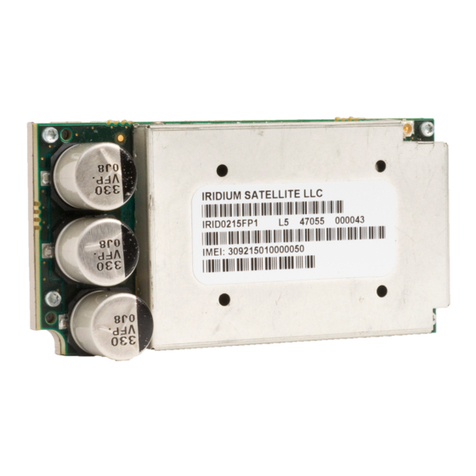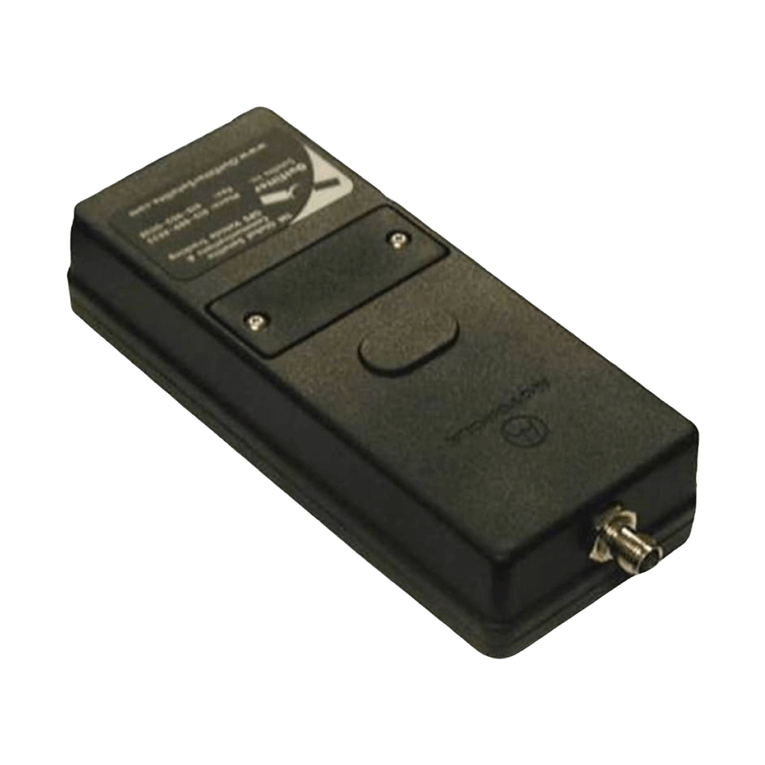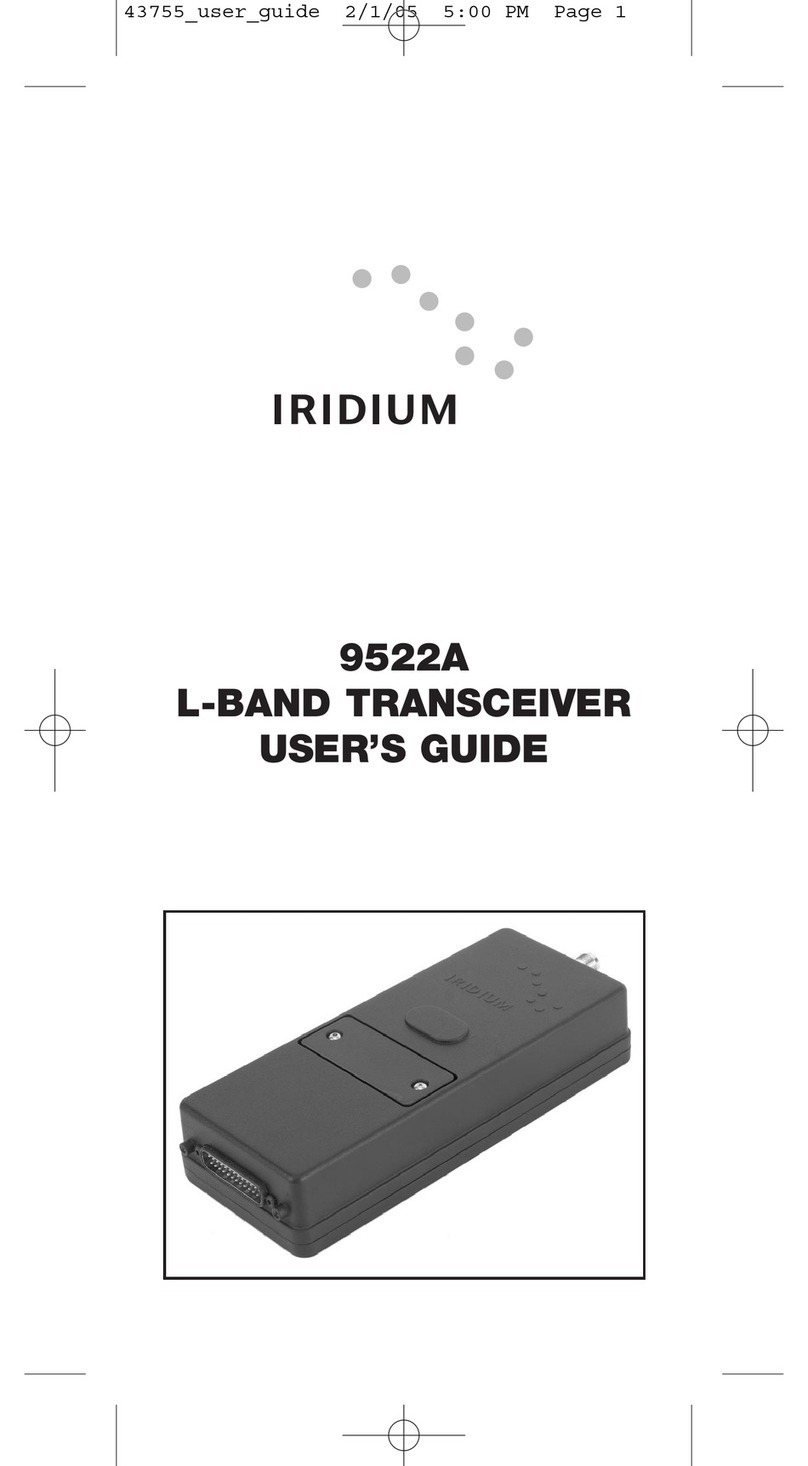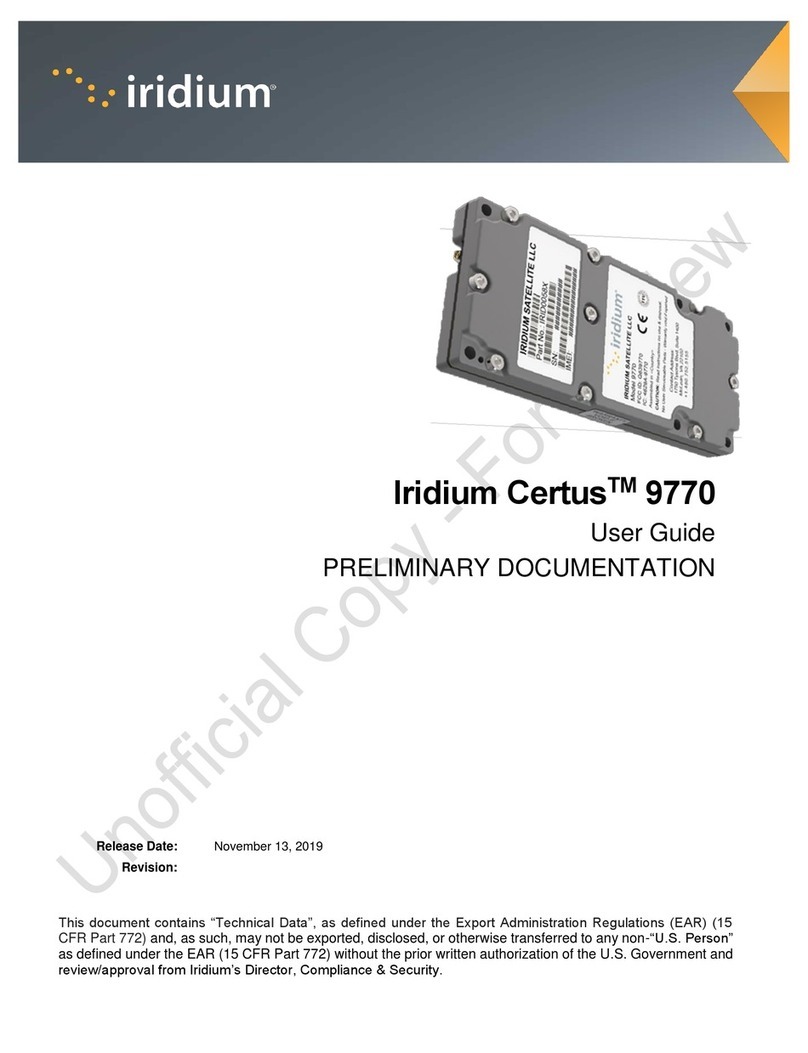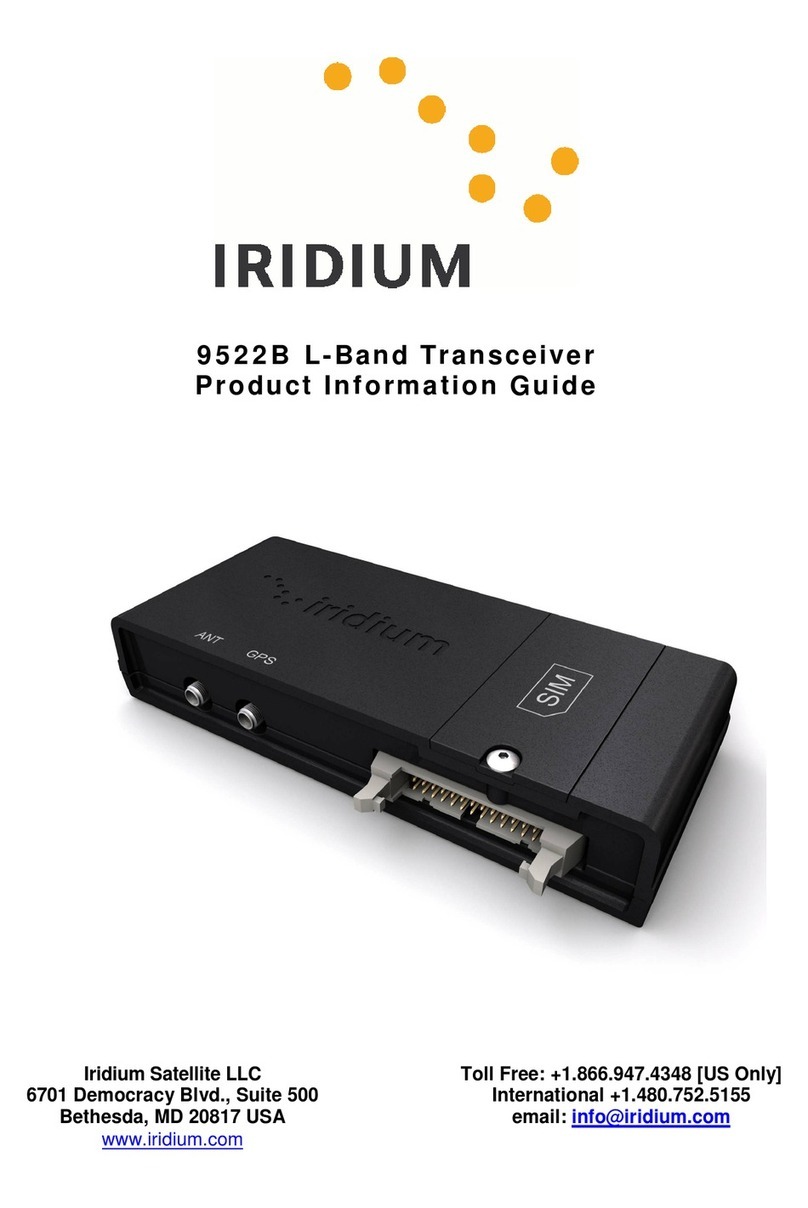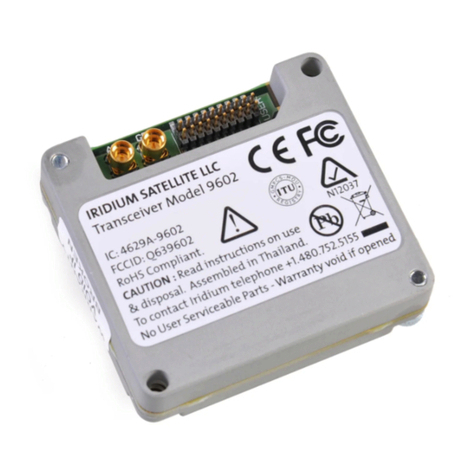
Iridium Satellite LLC
9601 SBD Transceiver Product Developers Guide
V1.24 120505
Iridium Satellite LLC Proprietary & Confidential Information
Information contained herein is subject to change without further notice
LEGAL DISCLAIMER
This document contains information for the Iridium 9601 Short Burst Data Transceiver. The purpose of
providing such information is to enable Value Added Resellers and Value Added Manufacturers to
understand the product and how to integrate it into a wireless data solution. Reasonable effort has been
made to make the information in this document reliable and consistent with specifications, test
measurements and other information. However, Iridium Satellite LLC makes no guarantee or warranty of,
and does not assume liability with respect to, the accuracy or the completeness of such information, or as
to the results of use of the transceiver in any specific instance, and hereby expressly disclaims any
implied warranties of merchantability or fitness for a particular purpose, or any other warranties or
representations whatsoever, express or implied. The application developer assumes the full risk of using
this specification and any other information provided. In no event shall Iridium Satellite LLC be liable for
any actual, direct, indirect, punitive, or consequential damages arising from such use, even if advised of
the possibility of such damages.
Iridium Satellite LLC does not warrant that this document is accurate or complete and reserves the right in
its sole discretion to change product specifications and materials without notice to you at any time.
Export Compliance Information
This product is controlled by the export laws and regulations of the United States of America. The U.S.
Government may restrict the export or re-export of this product to certain individuals and/or destinations.
For further information, contact the U.S. Department of Commerce, Bureau of Industry and Security or
visit www.bis.doc.gov.
Revision History
Revision Date Comment
1.0 May 02 2005 First revision
1.2 Aug 28 2005
Second revision incorporating major updates. Key updates are:
Product name change to “9601 SBD Transceiver”
Physical packaging
Connector types updated
AT Commands added and updated
1.21 Sep 29 2005 Mechanical dimensions drawings re-imported to enable them to be read
correctly. No changes to any specifications.
1.22 Nov 04 2005
1.2 Note on regulatory status of 9601-P3 and 9601-PP added.
2.1 Weight of transceiver card and final enclosure added
2.2 Updates to current consumption
2.3 & 1.2 Typographical errors corrected in list of standards
3.1 VSWR automatic trip removed from specification.
3.1.2 Power cable length restriction added
4.3 Uplink margin added
1.23 Nov 23 2005 3.2.2 Added typical power consumption profile information
Change of nomenclature from “Ring Alert” to “Automatic Notification”
DCD is driven OFF at all times.
1.24 Dec 05 2005 Added photograph instead of renderings
1.3 Added
3.5 Added additional detail to the “Network Available” function description
